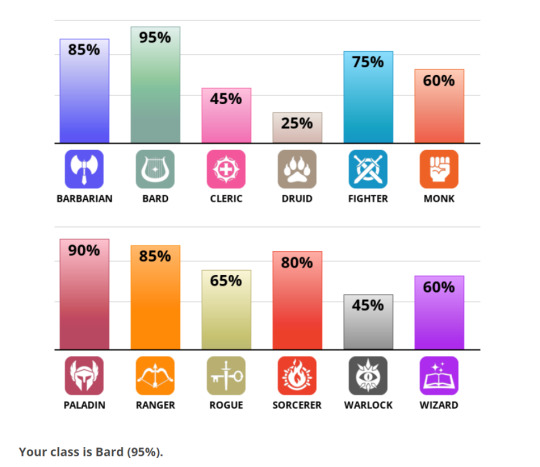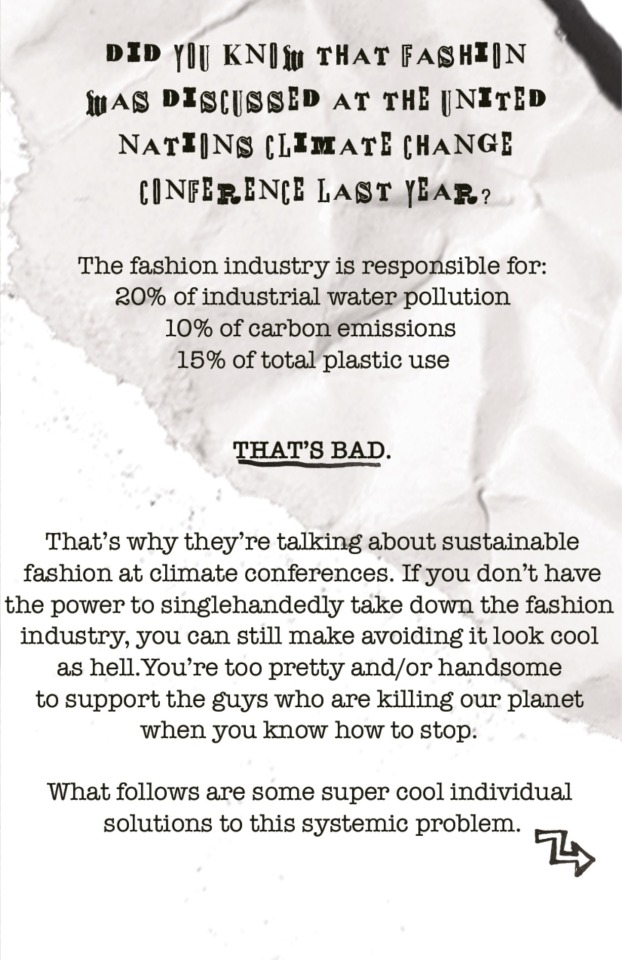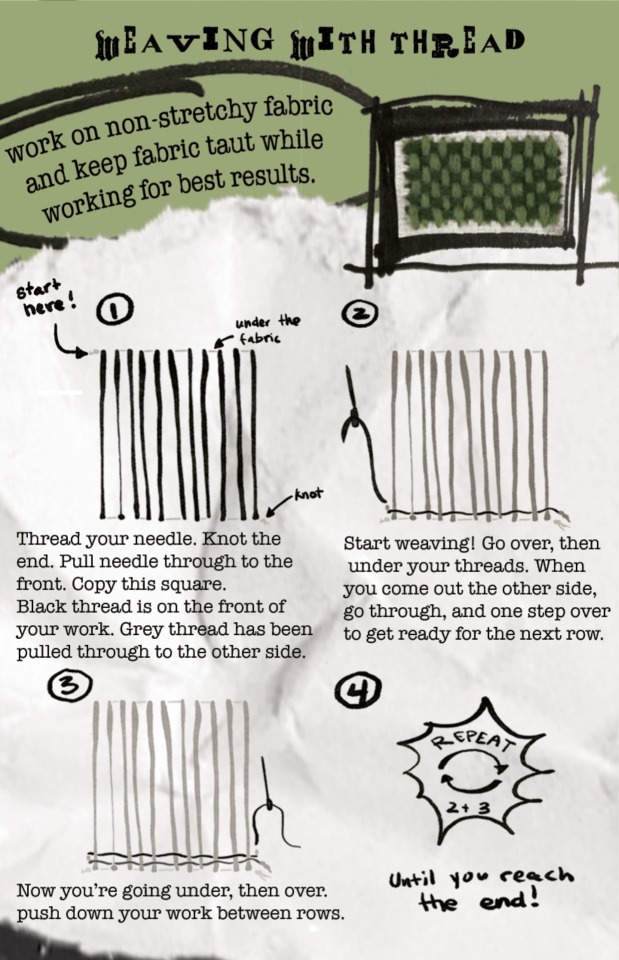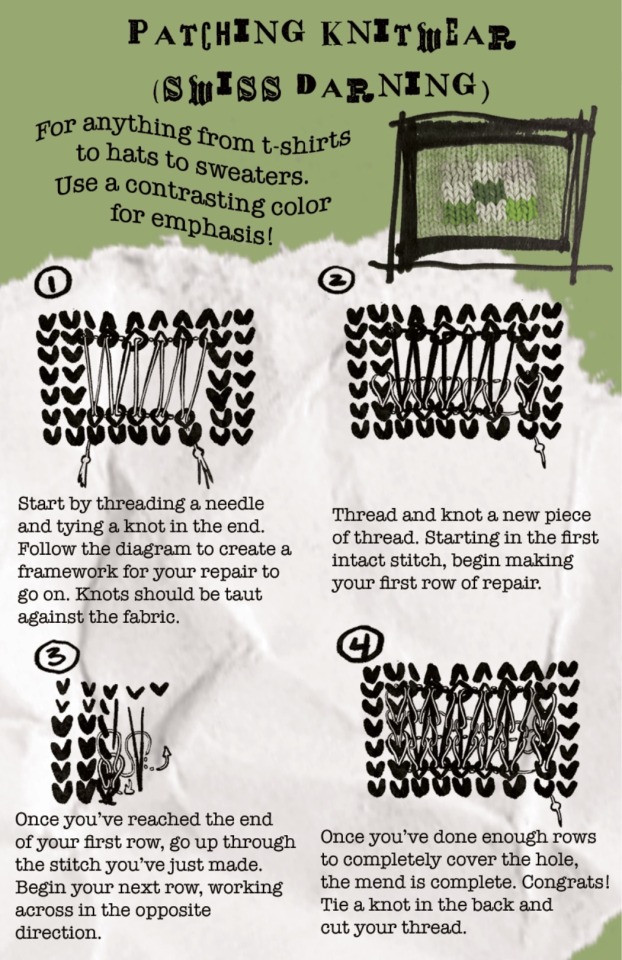Text
I was expecting anything but not Bard

17K notes
·
View notes
Text
That post I made over new years had people at my THROAT for saying I only buy real leather. Sorry I really do think that wearing textured plastic that will fall apart in under 5 years and go on to irreparably poison the environment is the worse option here.
24K notes
·
View notes
Text

if you wanna know what my dissertation is about, it's pretty much this!
7K notes
·
View notes
Photo

Mundane America. Broken pole with rope and an American Flag. Cincinnati, Ohio.
116K notes
·
View notes
Text
You know how companies used to make flour sacks with pretty flower patterns on them because mothers would make dresses out of them for their daughters? We should bring that back. Paper bags designed to be reused as wrapping paper. Jars of jam designed to look nice filled with pencils or homemade sauces. Fabric that's high quality enough to use as a patch.
Give things a second life!!
30K notes
·
View notes
Text
“Today’s rulings against Switzerland sets a historic precedent that applies to all European countries,” Gerry Liston, a lawyer at Global Legal Action Network, which supported the Portugal case, said in a statement. “It means that all European countries must urgently revise their targets so that they are science-based and aligned to 1.5 degrees. This is a massive win for all generations.”
193 notes
·
View notes
Text
youtube
This has been my feeling about this study too. Mulch is great but using up readily available cardboard is better than plastic or consuming a bunch of brand new landscaping fabric. I would much rather people use what they have and be aware of the drawbacks than go out and make unnecessary purchases of new materials.
I currently have a mountain of wood chips from Chip Drop that I only paid $20 for, so woodchips themselves are not cost prohibitive IF you have a place for a truck to drop a mountain of wood chips and arborists in the area willing to drop off excess woodchips. A lot of home gardeners don't have that luxury. Hell, I only have that luxury because we don't have roommates anymore, so we have a bunch of previously used parking spaces to store woodchips.
#thanks to covid living with other people is untenable#because people are not trustworthy about disclosing covid exposures#but hey at least i got the mountain of woodchips id been dreaming about for years and i can finally kill my front lawn#and replace it with a food forest#Youtube
22 notes
·
View notes
Text
this is so funny
"but uh when we advocated for indigenous sovereignty we thought you guys were just going to make a big park or something"
"fuck you. ultradense housing that bypasses your stupid zoning rules"
17K notes
·
View notes
Text
What I was taught growing up: Wild edible plants and animals were just so naturally abundant that the indigenous people of my area, namely western Washington state, didn't have to develop agriculture and could just easily forage/hunt for all their needs.
The first pebble in what would become a landslide: Native peoples practiced intentional fire, which kept the trees from growing over the camas praire.
The next: PNW native peoples intentionally planted and cultivated forest gardens, and we can still see the increase in biodiversity where these gardens were today.
The next: We have an oak prairie savanna ecosystem that was intentionally maintained via intentional fire (which they were banned from doing for like, 100 years and we're just now starting to do again), and this ecosystem is disappearing as Douglas firs spread, invasive species take over, and land is turned into European-style agricultural systems.
The Land Slide: Actually, the native peoples had a complex agricultural and food processing system that allowed them to meet all their needs throughout the year, including storing food for the long, wet, dark winter. They collected a wide variety of plant foods (along with the salmon, deer, and other animals they hunted), from seaweeds to roots to berries, and they also managed these food systems via not only burning, but pruning, weeding, planting, digging/tilling, selectively harvesting root crops so that smaller ones were left behind to grow and the biggest were left to reseed, and careful harvesting at particular times for each species that both ensured their perennial (!) crops would continue thriving and that harvest occurred at the best time for the best quality food. American settlers were willfully ignorant of the complex agricultural system, because being thus allowed them to claim the land wasn't being used. Native peoples were actively managing the ecosystem to produce their food, in a sustainable manner that increased biodiversity, thus benefiting not only themselves but other species as well.
So that's cool. If you want to read more, I suggest "Ancient Pathways, Ancestral Knowledge: Ethnobotany and Ecological Wisdom of Indigenous Peoples of Northwestern North America" by Nancy J. Turner
46K notes
·
View notes
Text
I went to the farm and garden store and didn't buy any fruit trees and I think that's very impressive of me
46 notes
·
View notes
Text
Sustainable fashion for the Solar Punk
If you enjoyed this, consider checking out my Ko-Fi for a printable zine version (or just to support my art :))








5K notes
·
View notes
Text
I assume everyone on tumblr is as enamored with trains as I am, and wishes that the US had a passenger rail network like Europe, China, or most parts of the world. But I also think people misunderstand the nature of modern passenger rail - that it's intensely modern.
Europe was all-in on cars and planes in the 60s and 70s almost as bad as the US. The Shinkansen opened in 1964, but the world's second high-speed rail line didn't come until 1981, in France. Germany opened its first line in 1991, and China's network only began in the 2000s. High-speed rail networks are expanding faster than ever, and speeds are still being pushed higher and higher. Interest in lower-speed lines is surging back, too, helped by HSR's success and demands for carbon-efficient transportation. Internet access has become a massive advantage for rail over planes or cars.
Trains aren't an age-old system that the US foolishly threw away, they're the future, and the US is stuck in the past.
1K notes
·
View notes
Text
“magic isnt real” — plants just grow out of the ground. for free. everywhere.
128K notes
·
View notes




